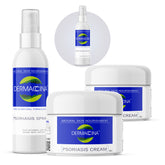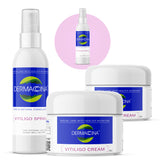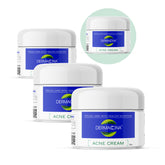Everything you need to know about Melasma: Causes, Symptoms, Diagnosis and Treatment
What is Melasma?
Melasma is a common skin condition that causes dark, discolored spots to appear on the skin, primarily on sun-exposed areas such as the face. This hyperpigmentation is due to the overproduction of melanin, the pigment that gives our skin its color. Although it can affect anyone, it is more common in women, especially during their reproductive years.
What causes Melasma?
The exact causes of melasma are not completely clear, but several factors have been identified as contributors:
- Sun Exposure: Ultraviolet (UV) radiation from the sun stimulates melanocytes (pigment-producing cells) to produce more melanin, which can trigger or worsen melasma.
- Hormonal Changes: Hormones play a crucial role in the development of melasma. It is common during pregnancy, known as "chloasma" or "mask of pregnancy," and can be triggered by the use of hormonal contraceptives or hormone therapy.
- Genetics: There is a genetic predisposition to melasma. If other family members have it, they are more likely to develop it.
- Cosmetic Products and Medications: Some skin care products and medications can irritate the skin and aggravate melasma.
What are the symptoms of Melasma?
Melasma mainly presents as dark, symmetrical spots with irregular edges in areas of the skin that receive more sun exposure, such as:- Face: Cheeks, bridge of the nose, forehead, chin and upper lip.
- Back of the hands: They are generally related to old age as they appear in most older people.
- Other Areas of the Body: Neck and forearms
How is Melasma diagnosed?
The diagnosis of melasma is usually made through a clinical evaluation by a dermatologist. During the consultation, the doctor can:
- Visual Examination: Direct inspection of the affected areas.
- Wood's Lamp: A device that emits UV light that helps identify the depth of pigmentation.
- Skin Biopsy: In rare cases, it may be necessary to take a small sample of skin for analysis in a laboratory to rule out other skin conditions.
What is the most effective treatment for Melasma?
Treating melasma can be challenging and often requires a multifaceted approach:
- Sun Protection: The most crucial measure to prevent and treat melasma is the daily use of sunscreen with a high SPF, as well as avoiding sun exposure and wearing protective clothing.
- Chemical Peels: Application of acids such as glycolic or trichloroacetic acid to exfoliate the superficial layers of the skin.
- Microdermabrasion: A procedure that exfoliates the outer layer of the skin to improve its texture and tone.
- Laser and Intense Pulsed Light (IPL): They use light energy to reduce pigmentation, although these treatments should be performed with caution as they can worsen melasma in some cases.
DERMACCINA TREATMENT FOR MELASMA
Dermaccina Whitening fights Melasma effectively, achieving the following objectives:
- Dissolves dead cells from the stratum corneum
- Promotes cell renewal and decreases melanin production.
- Eliminates the accumulation of hyperpigmentation (spots).
- It unifies the tone of the skin
All this through natural ingredients that include: Arbutin Extract which, acting as a tyrosinase inhibitor, stops the additional production of melanin - the pigment that creates skin color; Less tyrosine and less melanin means less pigment in conclusion less dark spots. It is safe to use for all skin types and tones.
With Dermaccina Whitening you can lighten abnormal pigmentation caused by freckles, age spots, sun spots, acne scars or MELASMA.
Taking care of your skin and protecting it from the sun not only helps treat melasma, but is also essential for maintaining healthy skin and preventing other skin problems. That's why we invite you to discover our Dermaccina Sunscreen sunscreen ☀️😎








